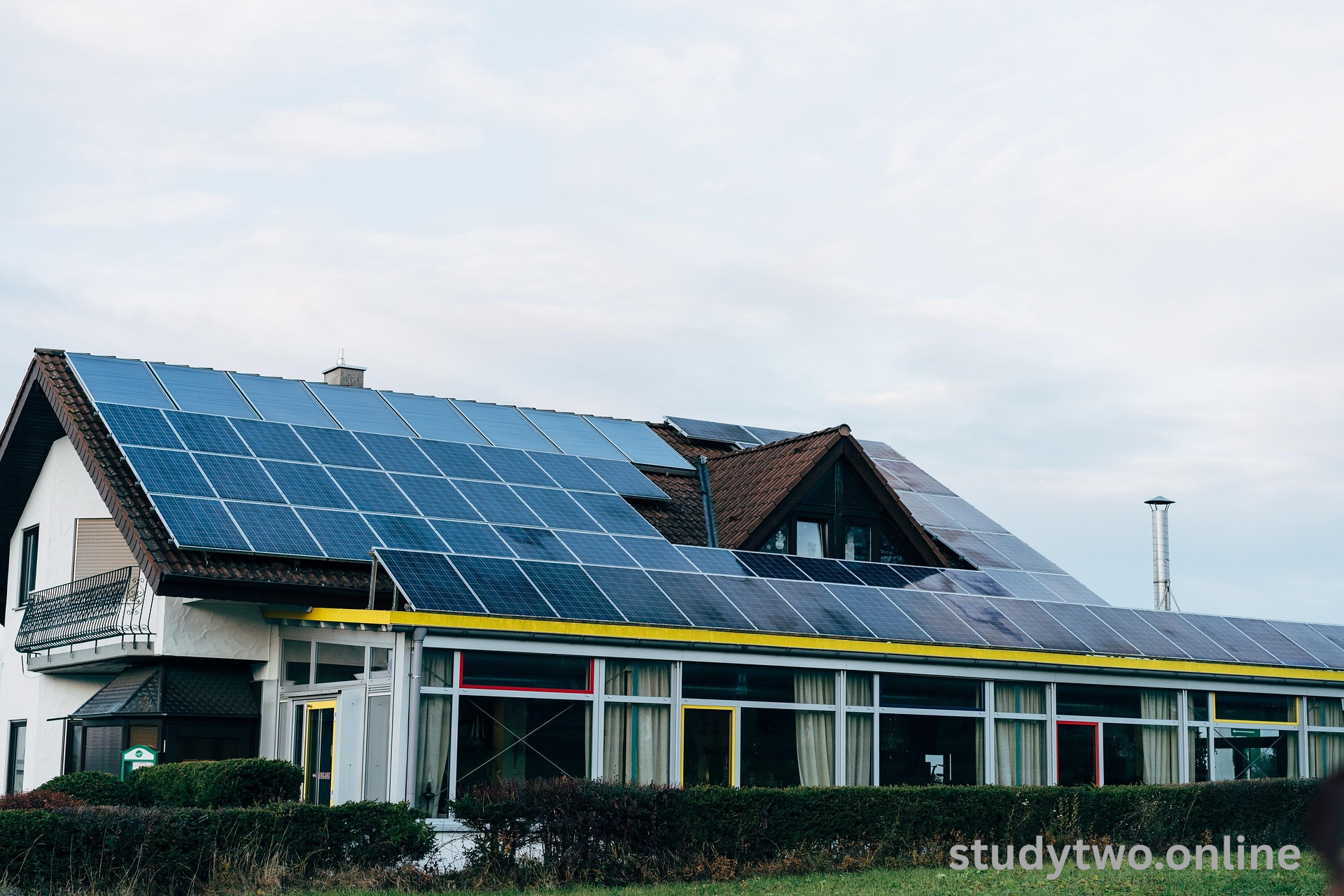Introduction to Green Technologies for Sustainable Living
With increasing global awareness of climate change, green technologies are revolutionizing the way we live with sustainable solutions that minimize environmental footprint and maximize quality of life. By 2025, renewable energy technologies, smart home systems, and green transportation are making sustainable living easier and more efficient. These technologies enable individuals and communities to reduce carbon footprints, save resources, and adopt a greener lifestyle. This article discusses the best environmentally friendly technologies for sustainable living, advantages, and trends influencing their uptake in 2025.

What Are Eco-Friendly Technologies?
Eco-friendly technologies are tools, systems, or processes designed to minimize environmental harm while promoting resource conservation and sustainability. They span various sectors, including energy, water management, transportation, and home design, and are often powered by renewable resources or optimized for efficiency. These technologies aim to reduce greenhouse gas emissions, decrease waste, and support long-term ecological balance, aligning with global sustainability goals like the UN’s 2030 Agenda.
Key eco-friendly technology categories are:
- Renewable Energy: Solar panels, wind turbines, and geothermal systems.
- Smart Home Systems: Energy-saving appliances and IoT-integrated devices.
- Green Transportation: Electric vehicles (EVs) and e-bikes.
- Water Conservation: Smart irrigation and greywater recycling systems.
- Sustainable Building: Green architecture and biodegradable materials.

Why Eco-Friendly Technologies Are Important in 2025
Embracing eco-friendly technologies is imperative for solving climate issues and promoting sustainable life. Here’s why they’re needed in 2025:
1. Fighting Climate Change
Technologies such as solar power and EVs diminish dependence on fossil fuels, reducing greenhouse gas emissions that cause global warming.
2. Resource Conservation
Water-saving appliances and energy-saving devices conserve limited resources for future use to be available.
3. Cost Savings
Although upfront costs are substantial, environmentally friendly technologies decrease utility bills and maintenance expenses in the long run, providing long-term savings.
4. Health Benefits
Green technologies, like air cleaners and non-toxic materials, enhance indoor air quality and minimize health hazards.
5. Global Momentum
As governments and companies pledge net-zero, green technologies are backed by ever-increasing incentives and policy support.
Best Eco-Friendly Technologies for Sustainable Living in 2025
These are the top technologies revolutionizing sustainable living, their uses, and advantages:
1. Solar Energy Systems
Description: Solar panels and battery storage systems, such as Tesla’s Powerwall, use sunlight to energize homes and businesses.
Benefits: Saves on electricity bills, decreases carbon emissions, and gives energy autonomy.
2025 Trend: High-efficiency photovoltaic cells and home battery systems at affordable prices make solar efficient and economical.
Cost: Home installations cost $10,000–$25,000 (with tax credits).
2. Smart Home Technologies
Description: IoT devices, including smart thermostats (e.g., Nest) and energy-monitoring systems, maximize energy and water consumption.
Benefits: Cuts energy waste by up to 20%, enhances convenience, and integrates with renewable energy systems.
2025 Trend: AI-driven smart homes predict usage patterns for maximum efficiency.
Cost: $100–$2,000 per device, depending on complexity.
3. Energy-Efficient Appliances
Description: Appliances with ENERGY STAR certification, like LED lighting and high-efficiency HVAC systems, use less power.
Benefits: Reduces energy consumption by 10–50%, lowers utility costs, and extends appliance lifespan.
2025 Trend: Smart appliances with real-time energy monitoring become more popular.
Cost: $200–$5,000 with rebates.
4. Electric Vehicles and Green Transportation
Description: EVs (e.g., Tesla Model Y) and e-bikes charged from renewable sources provide low-emission transportation alternatives to gasoline-powered cars.
Benefits: Reduces transportation emissions by up to 70%, saves fuel, and enhances urban mobility.
2025 Trend: Increased charging infrastructure and low-cost EV models increase adoption.
Cost: $30,000–$60,000 for EVs; $500–$2,000 for e-bikes.
5. Water Conservation Technologies
Description: Intelligent irrigation systems, low-flow devices, and greywater recycling systems reduce water loss.
Benefits: Conserves up to 50% of home water, lowers utility costs, and alleviates demand on water supplies.
2025 Trend: IoT-connected water sensors identify leaks and streamline use.
Cost: $50–$5,000, depending on the scope of the system.
Benefits of Adopting Eco-Friendly Technologies
Adopting these technologies brings substantial benefits to people and the planet:
- Environmental Impact: Lowers carbon emissions, waste, and resource depletion, in line with global climate objectives.
- Financial Savings: Reduces energy, water, and fuel expenses, with several technologies being eligible for tax credits or rebates.
- Improved Quality of Life: Increases comfort through home automation and healthier living spaces.
- Future-Proofing: Gets homes and communities ready for tighter environmental regulations and resource limitations.
- Community Benefits: Encourages local green economies and spurs collaborative sustainability action.
Top Trends Shaping Eco-Friendly Technologies in 2025
The eco-friendly technology space is rapidly transforming, driven by innovation and policy changes:
1. IoT and AI Integration
Real-time optimal energy and water use is achieved through AI-based systems, with IoT devices facilitating smart homes and cities’ easy connectivity.
2. Clean and Accessible Renewable Energy
Reduced prices for wind turbines and solar panels, combined with incentives from the government, bring renewable energy within reach for more homes.
3. Technologies for Circular Economy
Technologies such as zero-waste production and biodegradable products minimize landfill waste and encourage reuse of resources.
4. Urban Green Infrastructure
Cities are embracing sustainable architecture, including green roofs and vertical gardens, backed by modular building technologies.
5. Consumer-Driven Sustainability
Increased eco-awareness on the part of consumers creates demand for green products, compelling businesses to innovate and promote sustainable solutions.
Challenges in Adopting Eco-Friendly Technologies
Hurdles notwithstanding, adopting eco-friendly technologies are:
- Upfront Costs: Exorbitant initial investment in solar or EVs may discourage adoption.
Solution: Use financing options, leases, or government subsidies. - Access Inequality: Low-income or rural areas can be without infrastructure.
Solution: Promote balanced policy and community solar initiatives. - Technical Complexity: Expertise is needed to install or maintain systems.
Solution: Employ certified experts or utilize products with easy usage. - Consumer Awareness: Limited knowledge slows uptake.
Solution: Educate online and through community workshops. - Policy Gaps: Unclear rules may slow things.
Solution: Encourage policies that encourage green tech uptake.
How to Integrate Eco-Friendly Technologies into Your Life
People can embrace green living with these simple steps:
- Assess Your Needs: Look for areas such as energy, water, or transportation where green tech has the most effect.
- Start Small: Add inexpensive solutions such as LED light bulbs or low-flow shower heads before upgrading to larger systems.
- Research Incentives: Check federal, state, or local rebates for solar, EVs, or energy-efficient devices.
- Choose Reputable Brands: Use devices from reputable brands such as Tesla, Nest, or Rain Bird for dependability.
- Stay Up to Date: Subscribe to blogs, webinars, or institutions such as the U.S. Green Building Council for green tech updates.
The Future of Green Technologies
Beyond 2025, green technologies will continue to advance:
- Next-Gen Renewables: Perovskite solar cells and floating wind farms will maximize efficiency and scalability.
- Smart Cities: Combined IoT systems will make energy, water, and transport more efficient across urban spaces.
- Bio-Based Innovations: Bioplastics and algae-derived fuels will minimize use of fossil resources.
- Global Cooperation: Global partnerships will drive green tech implementation in emerging markets.
- Consumer Empowerment: Platforms and apps will provide people with the capability to monitor and monitor their carbon footprint in real time.
Conclusion
Green technologies are transforming sustainable lifestyles in 2025, with pragmatic, effective solutions to minimize environmental degradation and maximise quality of life. From solar energy systems to smart home devices and electric vehicles, these innovations empower individuals to lower their carbon footprints while saving money and resources. Despite challenges like upfront costs and access disparities, trends like AI integration, affordable renewables, and consumer demand are driving widespread adoption. By adopting these technologies, you help create a greener earth and get others to follow your lead, setting the stage for a sustainable future.
